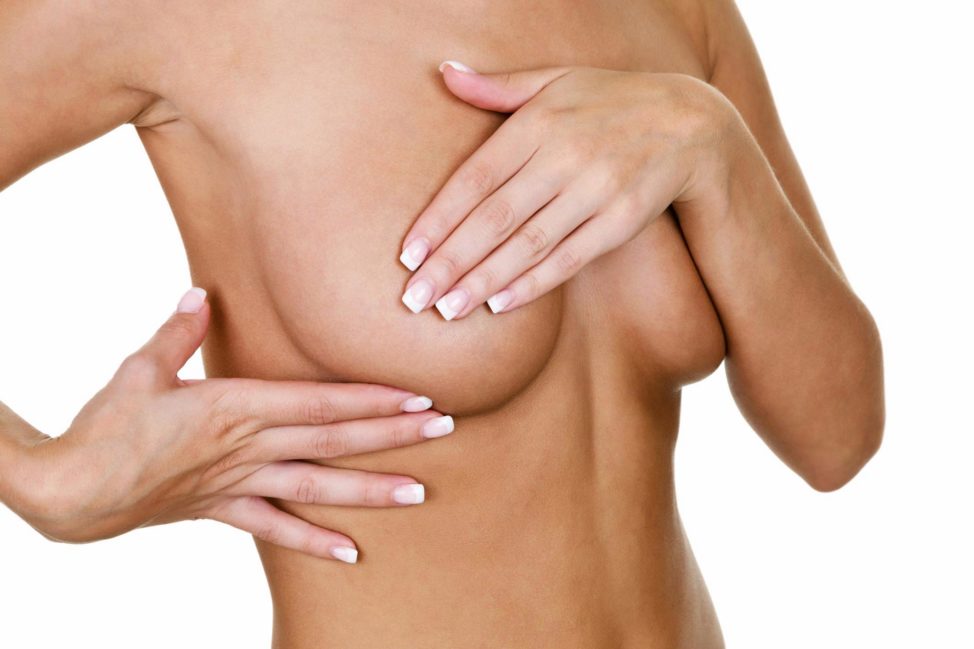
File photo
There are many ways you can perform breast self-examinations on yourself to check for cancer. These are some of those ways.
Breast cancer just like other cancers if detected early can be treated. Adult women of all ages are encouraged to perform breast self-exams at least once a month. According to Johns Hopkins Medical center,
“Forty percent of diagnosed breast cancers are detected by women who feel a lump, so establishing a regular breast self-exam is very important.”
Breast self-examinations help you to be familiar with how your breasts look and feel so you can alert your healthcare professional if there are any changes. Find below the different ways to examine your breasts as stated in the National Breast Cancer Foundation website.
In the Shower
While taking your shower, you can use the pads of your fingers, move around your entire breast in a circular pattern moving from the outside to the center, checking the entire breast and armpit area. Check both breasts each month feeling for any lump, thickening, or hardened knot. If you feel any lumps in your breasts, inform your healthcare professional as soon as possible.
In front of the mirror
Visually inspect your breasts with your arms at your sides. Next, raise your arms high overhead. Look for any changes in the contour, any swelling, or dimpling of the skin, or changes in the nipples. Next, rest your palms on your hips and press firmly to flex your chest muscles. Left and right breasts will not exactly match, few women’s breasts do, so look for any dimpling, puckering, or changes, particularly on one side.
Lying Down
When lying down, the breast tissue spreads out evenly along the chest wall. Place a pillow under your right shoulder and your right arm behind your head. Using your left hand, move the pads of your fingers around your right breast gently in small circular motions covering the entire breast area and armpit. Use light, medium, and firm pressure. Squeeze the nipple; check for discharge and lumps. Repeat these steps for your left breast.
If you notice any discharge, lumps or pains, reach out to your doctor without delay.
While taking your shower, you can use the pads of your fingers, move around your entire breast in a circular pattern moving from the outside to the center, checking the entire breast and armpit area. Check both breasts each month feeling for any lump, thickening, or hardened knot. If you feel any lumps in your breasts, inform your healthcare professional as soon as possible.
In front of the mirror
Visually inspect your breasts with your arms at your sides. Next, raise your arms high overhead. Look for any changes in the contour, any swelling, or dimpling of the skin, or changes in the nipples. Next, rest your palms on your hips and press firmly to flex your chest muscles. Left and right breasts will not exactly match, few women’s breasts do, so look for any dimpling, puckering, or changes, particularly on one side.
Lying Down
When lying down, the breast tissue spreads out evenly along the chest wall. Place a pillow under your right shoulder and your right arm behind your head. Using your left hand, move the pads of your fingers around your right breast gently in small circular motions covering the entire breast area and armpit. Use light, medium, and firm pressure. Squeeze the nipple; check for discharge and lumps. Repeat these steps for your left breast.
If you notice any discharge, lumps or pains, reach out to your doctor without delay.
***
The medical information provided in this article is provided as an information resource only. This information does not create any patient-physician relationship and should not be used as a substitute for professional diagnosis and treatment.
The medical information provided in this article is provided as an information resource only. This information does not create any patient-physician relationship and should not be used as a substitute for professional diagnosis and treatment.
Via TheGuardian

